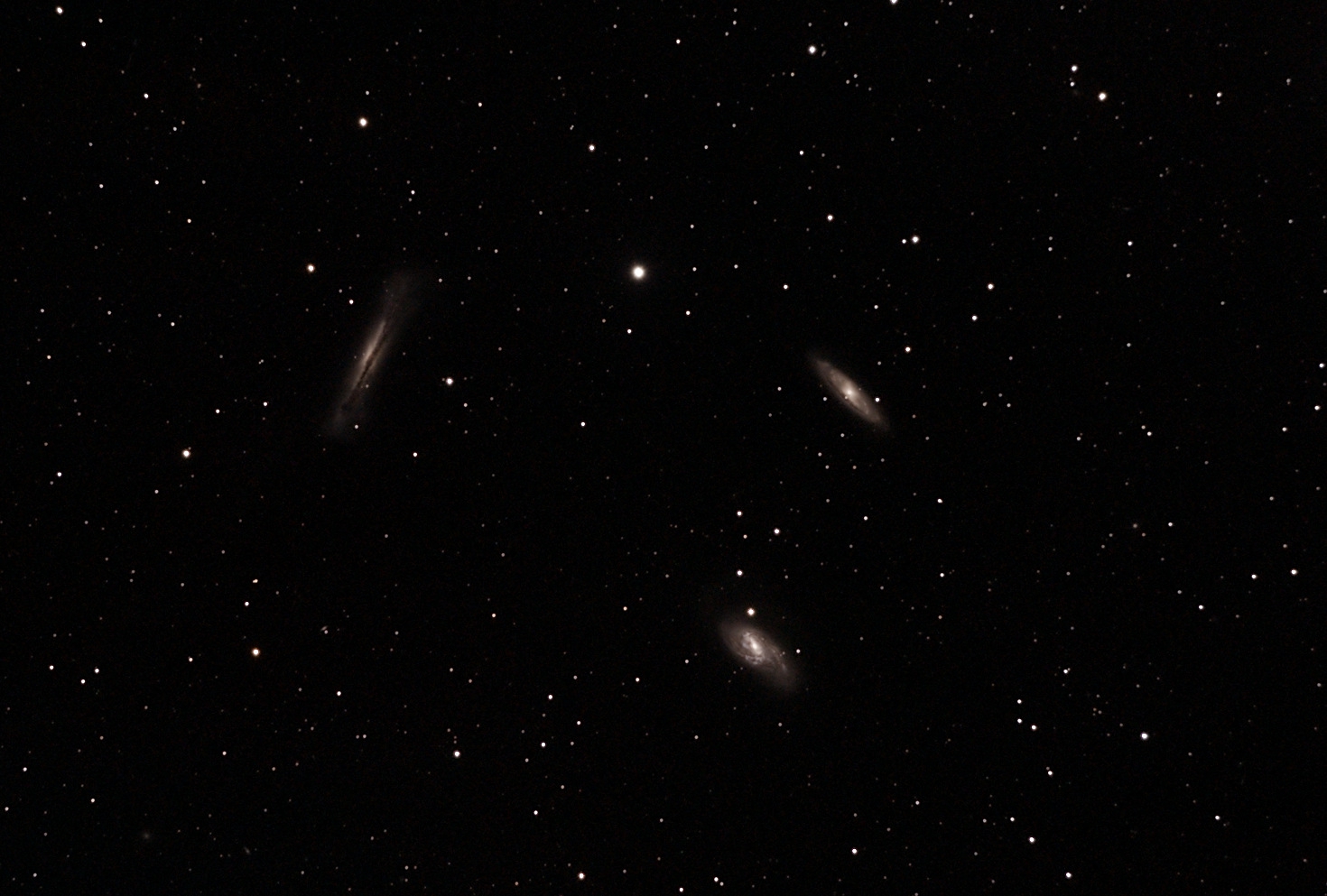galaxies
18 Mar 2019Nashville has been inundated with clouds and rain (and flooding), so not much occasion for astrophotography these days .. until this weekend! I am still pretty new, and thus unfamiliar with the winter sky, so I was glad for a few clear nights so I could finally see what’s out there. I decided to target a long-time favorite of mine: the Leo Triplet of galaxies (M65, M66, and NGC 3628). These galaxies are distant (for my telescope, anyway), at around 35 million light years away. However, they are also quite bright, so I decided to give it a whirl. I took a few test shots and was pleased to see all 3 galaxies clear, so I let it roll for a few hours. Unfortunately, clouds started moving in, but I had a sneaking suspicion they would burn up overnight and I was right! Decent results, and probably about as good as I can ask for with this particular telescope/camera combo:
- Subject: Leo Triplet (M65, M66, and NGC 3628)
- Camera: Sony A7S II
- Telescope: Astro-Tech AT72EDII
- ISO: 2000
- Shutter Speed: 60”
- Light Frames: 180
- Dark Frames: 60
- Flat Frames: 40
- Offset Frames: 20
- Software: Pixinsight - DynamicCrop, AutomaticBackkgroundExtraction, Background Neutralization, Color Calibration, SCNR noise reduction, Histogram Transformation, Curves Transformation, Unsharp Mask
I decided to cut my losses early with the Leo Triplet because I was still afraid of the clouds creeping further north, so I pointed at Bode’s & Cigar Galaxy – another favorite of mine. Bode’s is not as bright as the Leo Triplet, but it’s much bigger. By the time I was already taking photos of these, the sky had completely cleared, so I probably could have just stuck with gathering data of the Leo Triplet, but ah well. At least I got two photos!
- Subject: Bode’s and the Cigar Galaxy (M81 and M82)
- Camera: Sony A7S II
- Telescope: Astro-Tech AT72EDII
- ISO: 2000
- Shutter Speed: 60”
- Light Frames: 68
- Dark Frames: 60
- Flat Frames: 40
- Offset Frames: 20
- Software: Pixinsight - DynamicCrop, AutomaticBackkgroundExtraction, Background Neutralization, Color Calibration, SCNR noise reduction, Histogram Transformation, Curves Transformation, Unsharp Mask
Not bad, but would have been better with some more time to bring out detail. Pretty pleased for a first pass, though! I didn’t spend a lot of time on postprocessing these – I even used AutomaticBackgroundExtraction, just because there wasn’t a particularly bad gradient. I tried to get some more color but after color calibration and boosting saturation it just wound up exascerbating the noise and looking shittier, so in the end I just ended up going with the slightly-warmer-than-natural white balance I got out of the camera since I like the way it looked better.

